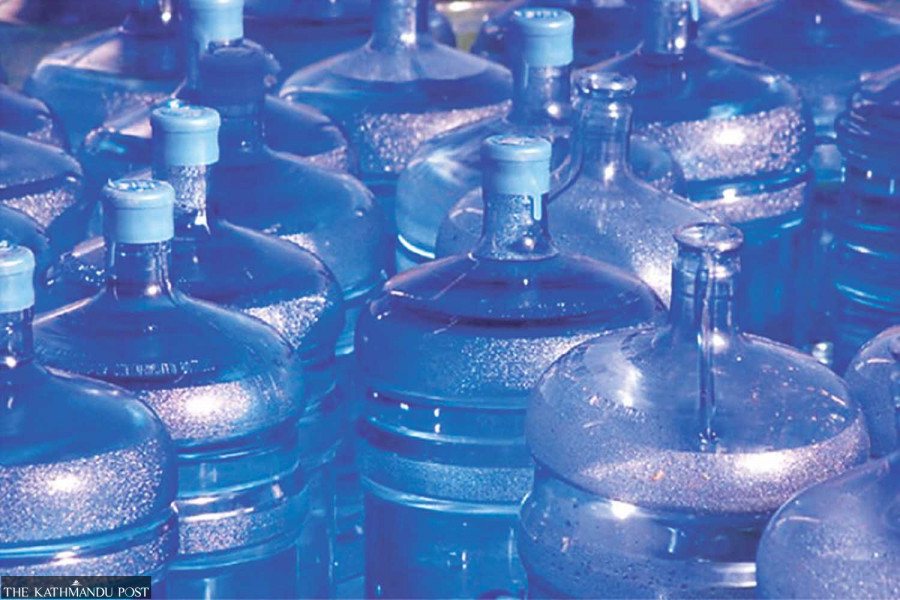Health
Faecal coliform found in drinking water samples taken from Godawari ward
Health Office Lalitpur, which tested the samples, has asked the general public to ensure proper purification, storage and safe handling of drinking water.
Post Report
Drinking water samples collected from ward 7 of Godawari Municipality in Lalitpur district are found to be contaminated with faecal coliform, according to the Health Office Lalitpur, which tested the water samples.
Officials say water samples collected from the source, public taps and a community school of ward 7 in Godawari Municipality were found unfit to drink due to the presence of potentially deadly microbes.
“Our technical staff had collected samples from the source, public taps and a school. All of them were found contaminated with coliform,” said Dr Bhuwan Poudel, chief of the Health Office Lalitpur. “We have alerted health workers and the public of Godawari Municipality’s ward 7 about the risk and urged them to ensure the safety of water before drinking.”
Faecal coliform, a microscopic organism, lives in the intestines of warm-blooded animals or their faeces. The presence of faecal coliform means that the drinking water being used by locals of Godawari-7 is contaminated with sewage, according to doctors.
Health officials said they had also tested drinking water samples collected from Lalitpur Metropolitan City and other local units but did not find contamination.
Along with Lalitpur Metropolitan City, Mahalaxmi, Godawari, Konjyoson, Bagmati and Mahankal rural municipalities constitute Lalitpur district.
“Though testing drinking water used by the public is our regular task, we have stepped it up,” said Shree Bhadra Sharma, a lab technician at the Health Office Lalitpur. Samples of drinking water are being collected in coordination with health workers serving at local levels, drinking water consumer committees, and others.”
Officials at the Health Office Kathmandu said they will also start testing the water consumed by people in the district soon.
“We have been busy with the measles-rubella campaign, which has just been over,” said Dr Arjun Sapkota, chief of the Health Office Kathmandu. “We will also start testing the quality of drinking water supplied in the district.”
Health agencies of Kathmandu Valley test drinking water, especially during the monsoon season. In addition to water samples collected from public taps, they also test jar water, water supplied by the state utility, tanker water, tube well water, water from wells, and water from the Melamchi river.
Bottled water is widely used by households and offices in Kathmandu Valley and is considered comparatively safe. However, every year, testing shows the presence of dangerous microbes in bottled water, too, which means not all jar water brands are safe to drink without treatment.
Doctors say it is not the first time that the water used by people in the Valley was found contaminated with potentially deadly microbes. What concerns them more is that water quality has not improved much.
“Consumption of water contaminated with human faeces causes diarrheal infections,” said Dr Sher Bahadur Pun, chief of the Clinical Research Unit at Sukraraj Tropical and Infectious Disease Hospital. “Whatever the source, one must ensure that water is safe before drinking.”
According to Pun, the number of diarrheal cases has started rising in the hospital, and contaminated water and food are the main culprits. He said there are chances of outbreaks of diarrheal infections in multiple places where water from contaminated sources is being distributed.
Experts have asked the general public to make sure their water is safe for drinking. As the pre-monsoon rainfall has started, health workers say the risk of contamination has gone up.
“Cases of food poisoning and diarrheal infection grow in the summer,” said Pun. “One should be conscious of the quality of food and water before consumption.”
Doctors say the consumption of contaminated water not only causes diarrheal infections and deadly cholera but also increases the chances of contracting dysentery, typhoid, and hepatitis A and E.
Initiating awareness drives and ensuring safe drinking water are the only ways to save people from water-borne diseases, according to them.
A combination of careful surveys, provision of safe drinking water, good sanitation and hygiene standards, social mobilisation and treatment are required to contain the spread of infection, they say.




 7.12°C Kathmandu
7.12°C Kathmandu












%20(1).jpg&w=300&height=200)
